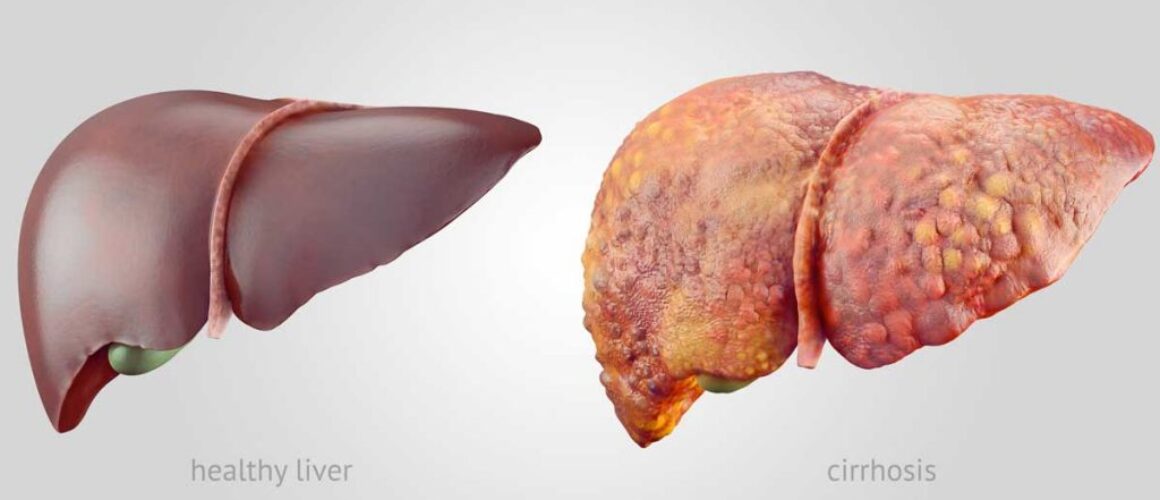Another Reason to Ban Monsanto’s Roundup: Fatty Liver Disease
Professor David Schubert wrote this important article calling for a ban on the use of Monsanto’s Roundup as an herbicide. As the evidence of harm continues to mount, lawyers are beginning to take notice of these scientific studies. Please read and share.
An important new study shows that the most widely used agricultural herbicide on the planet has the potential to cause non-alcoholic fatty liver disease (NAFLD) in rats at extremely low levels of exposure. Published in Scientific Reports, a journal in the prestigious Nature portfolio, the study shows that the weed killer, Roundup, causes a serious liver disease in rats at a concentration greatly below that found in the bodies of most Americans.
About one third of US residents are affected by NAFLD, which results from the accumulation of fat in the liver, causing an inflammatory response that can damage the liver and other organs. While NAFLD causes no symptoms in most people, it can lead to liver cirrhosis and cancer. The known risk factors are diabetes or the metabolic syndrome manifested by high cholesterol, insulin resistance, elevated serum lipids, and obesity. But these risk factors alone may not explain the increasing prevalence of NAFLD – it is much more common in young people than in past decades, and liver cancer among Americans has increased almost three-fold since the 1980s.
In the world of drug development, in which I am a participant, before a drug is allowed into the clinic, it must be carefully screened in animals such as rats to determine if it shows toxic effects at the exposure levels where it is expected to be effective in humans. If any toxicity is observed, the drug is not allowed. In addition, once approved, signs of toxicity in patients must be monitored and reported to the Food and Drug Administration (FDA). One would hope that this would also be the case with prevalent agricultural chemicals, but it is not.
In theory, all agricultural chemicals in the US are tested for safety under the guidance of the Environmental Protection Agency (EPA). However, the testing is done under the supervision of the manufacturer, not the government agency; it is not made public; and in essentially all cases animal exposure is only to the active ingredient, not the mixture of chemicals that are in the formulation and required for its effective application.
Glyphosate, the active ingredient in the herbicide Roundup, is not only used to kill weeds, but it is essential for the successful cultivation of most genetically modified (GM) crops that are in our food supply. Another major source of human exposure is from cereal grains, for glyphosate-based herbicides are sprayed on these crops to kill and desiccate them before harvest. As with GM soy and corn, glyphosate is incorporated into the grain and cannot be washed off. The World Health Organization’s cancer research agency IARC has determined that glyphosate is a probable carcinogen, and there are many published manuscripts by independent academic scientists suggesting its toxicity.
Glyphosate is now found in most, if not all, non-organic food products. It is readily detected in the blood and urine of most Americans. From a public health perspective, the question has always been whether or not the amounts found in people are a cause for concern. The data in this new study in Scientific Reports suggests that the answer is a definitive yes.
Using the same strain of rats that the FDA requires for its drug toxicology studies and state of the art analytical technology, Dr. Mesnage and his colleagues showed that exposing the animals to Roundup at concentrations of glyphosate a thousand times lower than allowable limits in food and drinking water, and even lower than that found in the urine of most Americans, caused changes in the liver that had all of the molecular signatures of NAFLD. It is highly unlikely that the FDA would allow a drug that is this toxic to rats to be given to humans.
An important aspect of this study is that the rats were exposed to Roundup for about two-thirds of their three year lifespan, starting at five weeks of age. We know from the examination of young children in the mid-western part of the US that they have very high levels of glyphosate in their bodies. This contamination will persist throughout life as long as there is such a high level of environmental exposure from food, water and even air in areas where it is sprayed.
The current situation with glyphosate-based herbicides is directly analogous to those of DDT, asbestos, lead and tobacco, where industries were able to block regulatory actions for many years by perpetually muddying the waters with false data, resulting in large numbers of unnecessary deaths. However, in the case of glyphosate, both the US EPA and the European Union are currently considering the fate of this environmental toxin because its current authorization has expired.
In summary, this peer-reviewed study shows that a glyphosate based herbicide, Roundup, causes a serious liver disease in rats at a concentration greatly below that found in the bodies of most Americans. Based upon its long-term toxicity and the likelihood that it will have similar effects on humans as it has in rodents, it is time to eliminate this herbicide. This can be initiated at the local level by not buying products containing glyphosate to kill weeds; at the federal level by engaging the EPA; and internationally through the World Health Organization, the first organization with courage enough to stand up to agricultural chemical companies and publicize the toxicity of this herbicide to humans.
Originally published at GMWatch.org.
